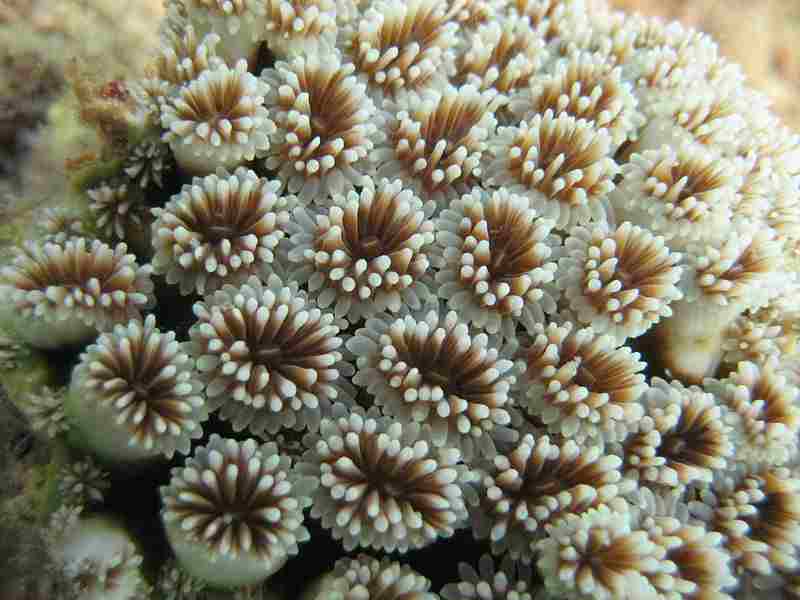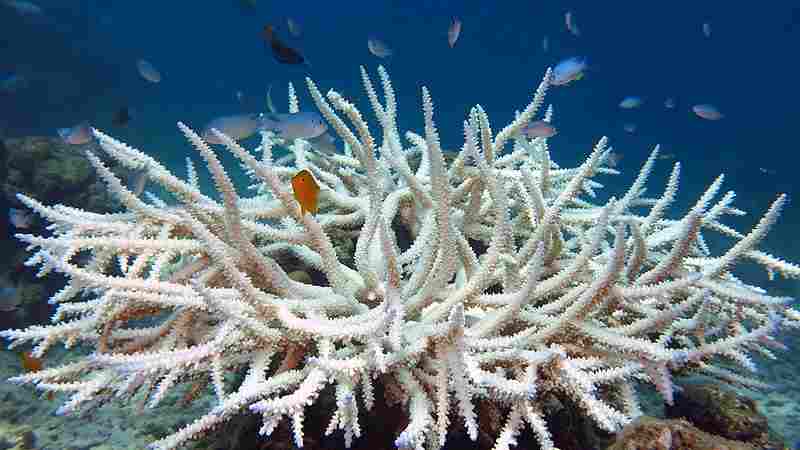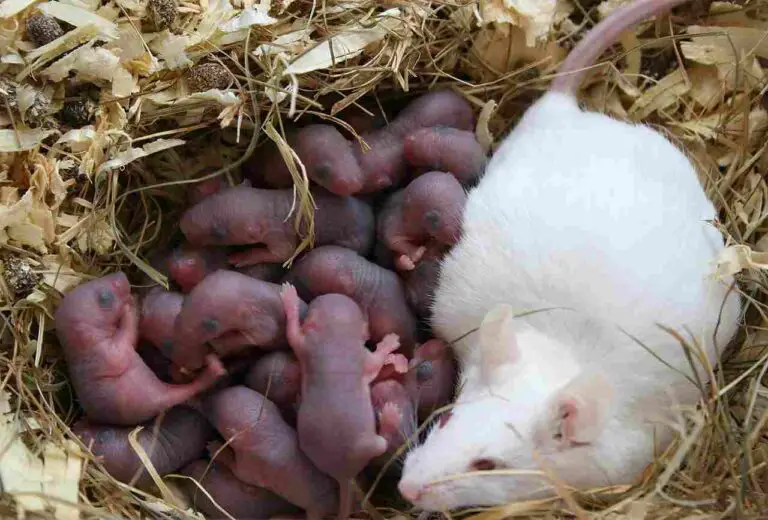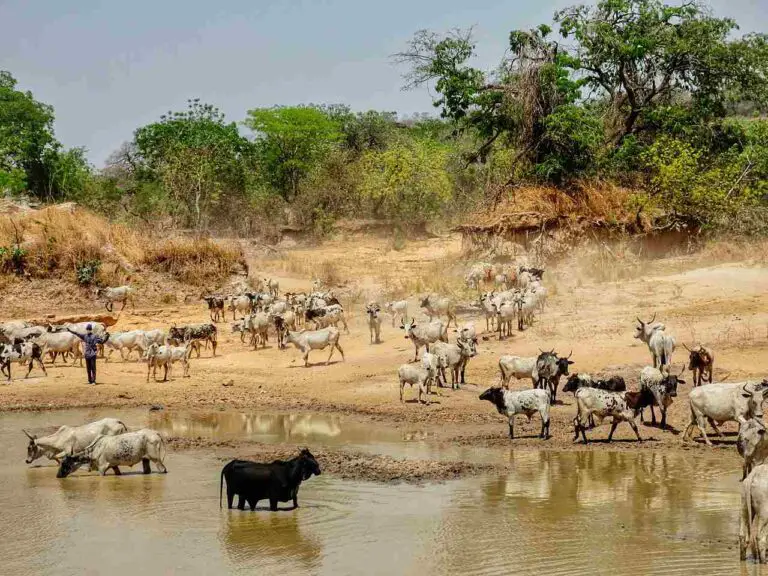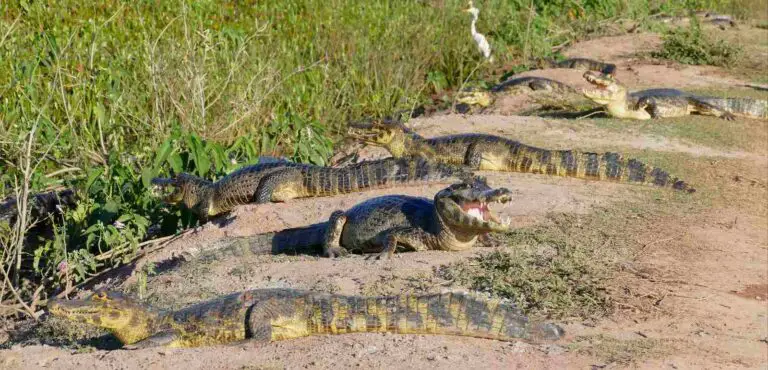23 Threats, Human Impacts, Conservation Strategies for Oceans
Threats to the ocean are; overfishing, noise pollution, oil spillage, dumping of plastics and other solid wastes, industrial waste discharged, and unsustainable deep sea mining.
Human impacts on the ocean are; habitat loss in the deep ocean, severe pollution, ocean acidification, biodiversity loss, proliferation of invasive species, disease spread in marine communities, and ocean warming.
Conservation of marine life can be achieved through; delineation and protection of vulnerable areas, control of invasive species, enforcement of deep sea mining regulations, effective regulation of offshore oil and gas operations, implementation of sustainable fishing practices and policies, pre-treatment of all non-solid wastes before discharge, non-disposal of solid wastes in oceans, regular monitoring and assessment of marine life, sustainable agricultural practices in coastal regions, and adoption of clean energy alternatives.
This article discusses threats, human impacts, and conservation of marine life in oceans, as outlined below;
-Threats to the Ocean
Threats to the ocean include, overfishing, noise pollution, oil spillage, dumping of plastics and other solid wastes, industrial waste discharged, and unsustainable deep sea mining.
1). Overfishing: One of the Threats to the Ocean
Overfishing in the ocean refers to the depletion of marine fish stocks through fishing activities, to a point where the population cannot sustain itself through natural reproduction. It occurs when the rate of fishing exceeds the natural reproductive capacity of fish species, leading to a decline in their numbers. This imbalance and resource depletion can have severe ecological, economic, and social consequences.
Causes of overfishing in the ocean are; overcapacity of fishing fleets, unregulated harvesting, lack of sustainable practices, Illegal, Unreported, and Unregulated (IUU) fishing, as well as high global (or regional) demand for seafood. More details are given below;
Modern technology has enabled fishing vessels to cover larger areas and catch more fish than ever before. This overcapacity, combined with inefficient fishing methods, puts immense pressure on fish populations.
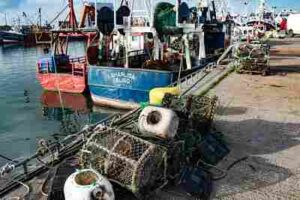
In many parts of the world, there is a lack of effective regulations and enforcement to control fishing activities. Some regions may lack proper management measures, allowing for excessive and uncontrolled harvesting.
Practices like bottom trawling and blast fishing can cause significant habitat destruction, impacting not only the targeted fish species but also the entire marine ecosystem. Unsustainable methods contribute to the depletion of fish stocks.
IUU fishing exacerbates overfishing by operating outside the bounds of national and international regulations. It often involves the use of destructive nd unchecked practices and can lead to the overexploitation of vulnerable species.
The increasing global demand for seafood, driven by population growth and changing dietary habits, puts additional pressure on fish stocks. High demand can lead to intensified fishing efforts to meet market needs.
Effects of overfishing in the ocean include; economic decline, ecological imbalance, loss of biodiversity, collapse of fisheries, and higher food insecurity risk. These consequences are discussed as follows;
Overfishing can lead to the collapse of fisheries, resulting in economic losses for fishing communities. The decline in fish stocks reduces the income and employment opportunities for those dependent on fishing.
The removal of large quantities of fish disrupts the natural balance of biotic resources within marine ecosystems. For example, predatory species may experience population explosions, while prey species decline, leading to cascading effects across the entire food web.
Overfishing often targets specific (economically and culinarily-valuable) species, leading to a reduction in marine species richness and biodiversity. This can have long-term consequences for the overall vitality and resilience of marine ecosystems.
If overfishing continues unabated, some fish populations may collapse, making it difficult for them to recover. This has happened with several commercially important species, such as cod and tuna, in various regions.
Lastly, overfishing can threaten the availability of fish as a primary protein source for millions of people, particularly in developing countries. This poses a significant risk to global food security.
Tackling the challenge of overfishing requires a comprehensive approach that involves sustainable management practices, effective regulations, as well as international cooperation. Sustainable fishing practices, marine protected areas, and responsible consumption are vital components of efforts to mitigate the impacts of overfishing on the world's oceans.
2). Noise Pollution
The threat of noise pollution to ocean ecosystems, has several implications which include; disruption of marine life communication, stress and behavioral changes, displacement of species, alteration of fish and marine invertebrate populations, masking of natural environmental sounds, and negative effects on marine reproduction. Below is an outline that discuses these factors;
Noise pollution interferes with the natural communication systems of marine animals, such as whales and dolphins, disrupting their ability to locate mates and find food, as well as suitable navigate routes.
Prolonged exposure to underwater noise can induce stress in marine species, leading to altered behaviors, reduced feeding efficiency, and potential long-term negative impacts on individual and population wellbeing/productivity.
Noise pollution can cause marine organisms to alter their habitat preferences or migration patterns, as they seek quieter areas. This displacement can result in changes to predator-prey dynamics and disrupt the stability and natural flow of marine ecosystems.
Fish larvae, as well as various invertebrates, are vulnerable to noise pollution, affecting their development, growth, and survival. This disturbance can have cascading effects throughout the marine food web.
Natural sounds crucial for marine organisms, such as the sounds of breaking waves or the crackling of shrimp, can be masked by anthropogenic noise. This interference can impede vital biological processes such as prey location and predator detection.
Noise pollution can also interfere with the reproductive success of marine species by disrupting courtship rituals and deterring individuals from breeding areas. This can lead to population decline and reduced biodiversity.
The cumulative impact of widespread noise pollution, often from shipping, industrial activities, and military operations, poses a significant and growing threat to the instantaneous and long-term resilience of ocean ecosystems.
Noise pollution problems in the oceans can be addressed through international collaboration to implement and enforce regulations, promote quieter technologies, and establish marine protected areas where noise levels are minimized. Mitigating the ecological and environmental impacts of human-generated noise is crucial for preserving the vitality and equilibrium of marine ecosystems.
3). Oil Spillage: One of the Threats to the Ocean
Oil spillage is prominent among the modern-day threats to the ocean ecosystem, especially as a result of the increased demand and rate of electricity generation as well as transportation.
The consequences of oil spillage for ocean ecosystems include; marine habitat destruction, exposure of marine life to toxic wastes, oil-coating of seabirds and marine mammals, long-term environmental degradation, economic decline, disruption of marine reproductive processes, challenges of environmental remediation, and global biodiversity impacts.
Oil spills result in the immediate and long-term destruction of marine habitats, impacting coastal ecosystems like coral reefs, and estuaries. This loss of habitat affects the survival of numerous local species.
Because petroleum contains some toxic substances harmful to marine organisms, it can poison fish, shellfish, and other species, leading to population declines and disrupting the marine food chain.
Oil-coated feathers compromise the insulation of marine birds, leading to hypothermia, reduced buoyancy, and difficulty in foraging. Marine mammals are also affected, as oil exposure can lead to ingestion of toxins and habitat degradation.
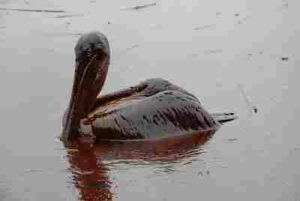
The persistence of spilled hydrocarbons in the environment can lead to chronic exposure for marine life, causing long-term damage to ecosystems. Even small, toxic releases can accumulate and have cumulative impacts.
Oil spills have significant economic consequences, affecting local fisheries, tourism, and various coastal industries. The loss of revenue and jobs can have lasting effects on communities that depend on a healthy marine environment.
Also, exposure to petroleum-derived toxins can interfere with the reproductive processes of marine organisms, leading to reduced reproductive success and population decline. This has long-lasting implications for the sustainability of species.
The cleanup of oil spills is challenging and often incomplete. Chemical dispersants and physical removal methods can themselves have environmental impacts, and some hydrocarbon residues persist for years, continuing to harm marine life.
Lastly, oil spills can have far-reaching consequences, affecting biodiversity on a global scale. The movement of ocean currents can spread oil to distant regions, impacting ecosystems and species that may not be directly connected to the spill site.
Addressing the threat of oil spills to oceans requires a combination improved prevention measures, emergency response capabilities, and the development of cleaner energy alternatives to reduce reliance on fossil fuels. International cooperation is also essential to minimize the environmental and economic effects of oil spills on ocean ecosystems.
4). Dumping of Plastics and Other Solid Wastes
It is fairly common for solid wastes like plastics, to be dumped heavily into oceans. This phenomenon may be described using any of various terms including; ocean pollution and plastic pollution.
There are multiple implications of dumping plastics and other solid wastes into oceans including; marine water pollution, habitat degradation, ingestion by marine life, entanglement and harm to organisms, microplastic contamination, economic impacts, and long-lasting environmental consequences at both local and global scales.
Dumping plastics and solid wastes introduces pollutants into the ocean, posing a severe threat to marine ecosystems. Plastics, in particular, persist for long periods, breaking down into smaller particles and microplastics that can harm marine life.
Accumulation of solid wastes on the ocean floor and in coastal areas leads to habitat degradation. This disrupts the natural stability of ecosystems, affecting the organisms that rely on such marine habitats for shelter, feeding, and reproduction.
Marine animals often mistake plastics for food, leading to ingestion of such inorganic wastes. This can cause physical harm, internal injuries, and even death. The toxins in plastics can also accumulate in the tissues of marine organisms, entering the food chain.
Plastics and other anthropogenic debris pose a direct physical threat to marine life through entanglement. Animals such as seals, turtles, and birds can get trapped in or ingest these materials, resulting in injury, suffocation, or impaired mobility.
Also, disposed plastics (asides some bioplastic materials) generally break down into tiny particles known as microplastics, which pervade the marine environment. Toxic microplastics can enter the oceanic food web, impacting species at various trophic levels and potentially reaching human consumers through seafood.
Coastal communities and industries dependent on healthy marine ecosystems suffer economic losses due to the effects of plastic and solid waste pollution. Tourism, fisheries, and other coastal activities are particularly vulnerable.
Plastics and solid wastes persist in the environment for extended periods, contributing to long-lasting environmental pollution. The slow degradation of these materials exacerbates their impact on ocean ecosystems over time.
Dumping of plastics is a global problem that transcends national borders. The interconnectedness of ocean currents can result in the transport of such harmful debris over vast distances, affecting even remote and pristine marine environments.
Addressing this threat requires comprehensive waste management strategies, reduction of single-use plastics, and international cooperation to enforce regulations and promote responsible disposal practices. Public awareness and engagement are both critical to mitigating the widespread impact of plastics and solid waste on marine ecosystems.
5). Industrial Waste Discharges: One of the Threats to the Ocean
Like plastics, wastes from industrial facilities and processes can infiltrate and degrade ocean ecosystems.
Implications of industrial waste discharges on ocean ecosystems are; water contamination, harm to marine life, bioaccumulation and biomagnification, habitat destruction, altered water chemistry, eutrophication, loss of marine diversity, as well as economic decline.
Industrial waste discharges introduce pollutants such as heavy metals and volatile organic compounds (VOCs), into marine environments, contaminating water and negatively impacting the productivity of such aquatic ecosystems.
Toxic substances from industrial discharges can harm marine organisms, leading to physiological damage, reproductive issues, and population decline. Sensitive species, including corals and fish, are particularly vulnerable.
Pollutants from industrial waste can undergo bioaccumulation in marine organisms, by concentrating in tissues over time. This can lead to biomagnification as predators consume contaminated prey, posing a threat to other organisms in higher trophic levels, including humans.
Industrial discharges contribute to habitat degradation, impacting shallow coastal areas and estuaries. The alteration of these habitats disrupts the stability of ecosystems, affecting the organisms that rely on them for foraging, shelter, and reproduction.
Chemical discharges can alter the pH and chemical composition of seawater, leading to ocean acidification. This can have cascading effects on marine communities, particularly organisms with calcium carbonate skeletons, such as corals and mollusks.
Nutrient-rich industrial discharges can lead to eutrophication, causing excessive growth of algae. This depletes oxygen levels in the water, creating what is known as "dead zones," where marine life cannot survive, and further disrupting the balance of ecosystems.
The cumulative impact of industrial waste discharges contributes to the loss of biodiversity in affected areas. Sensitive and specialized species may be unable to adapt, leading to a decline in overall ecosystem diversity.
The negative effects of industrial waste on marine ecosystems can have economic repercussions for industries dependent on healthy oceans, such as fisheries and tourism. Losses in revenue and jobs can occur in communities relying on these activities.
In general, the threat of industrial waste discharges can be addressed using stringent regulations, effective enforcement, and the adoption of cleaner production technologies. Sustainable industrial practices, pollution prevention, and the implementation of effective wastewater treatment technologies are all crucial for mitigating the impact of industrial activities on ocean ecosystems.
6). Unsustainable Deep Sea Mining
Like other anthropogenic activities, deep sea mining can have significant repercussions for ocean ecosystems when it is not practiced in a sustainable manner.
Implications of unsustainable deep sea mining on ocean ecosystems include; habitat destruction, biodiversity loss, chemical contamination, ocean acidification, altered seafloor topography, long-term ecosystem recovery, issues of global connectivity, and regulatory challenges.
Deep sea mining involves extracting minerals from the ocean floor, and can lead to habitat destruction in areas that are often ecologically unique and poorly understood. Disturbances can impact fragile deep-sea/abyssal ecosystems and the species adapted to extreme conditions.
The disruption caused by deep sea mining can result in the loss of diverse and distinctive species that inhabit deep-sea environments. Slow reproduction rates and limited dispersal ability make these species particularly vulnerable to disturbance.
Mining activities release both sediments and manmade chemicals into the water, affecting the surrounding ecosystem. Toxic substances, including heavy metals, can contaminate the water column, harming marine life and disrupting biological processes.
In many cases, deep sea mining operations may release sulfuric acid into the water, contributing to ocean acidification. This acidification can have detrimental effects on marine organisms, particularly those with calcium carbonate skeletons, such as corals and certain mollusks.
Mining activities can adversely alter the topography of the seafloor, impacting geological and hydrothermal processes. This disruption may have cascading effects on the distribution of species as well as the functioning of deep-sea ecosystems.
Deep-sea ecosystems have limited capacity to recover from disturbances due to slow growth rates of organisms and the remote nature of these environments. Unsustainable mining practices can lead to irreversible changes that persist for generations.
The interconnectedness and wide-reach of ocean currents means that disturbances caused by deep sea mining can have far-reaching effects beyond the immediate mining site. Contaminants and disrupted ecosystems can impact marine life in distant areas.
Lastly, the lack of comprehensive international regulations and monitoring frameworks for deep sea mining poses challenges in ensuring sustainable practices. The absence of clear guidelines can also result in inadequate environmental protection measures.
Efforts to address the threats posed by deep sea mining must include the development and enforcement of robust regulations, thorough environmental impact assessments, and the promotion of sustainable mining practices. Scientific research and international cooperation are both essential to mitigate the potential adverse consequences on deep-sea ecosystems.
-Human Impacts On the Ocean
Human impacts on the ocean include; habitat loss in the deep ocean, severe pollution, ocean acidification, biodiversity loss, proliferation of invasive species, disease spread in marine communities, and ocean warming.
1). Habitat Loss in the Deep Ocean
Human-induced habitat loss in the deep ocean, is one of the notable human impacts on the ocean ecosystem. It may occur through any of various mechanisms, including; deep sea mining, bottom trawling, pollution and dumping, climate change, cable laying and infrastructure intrusion, overfishing, oil and gas exploration, and lack of regulation. These issues are discussed further below;
As earlier mentioned, extracting minerals from the deep ocean floor through mining operations leads to physical habitat destruction, altering seafloor topography and impacting unique ecosystems that support diverse and often slow-growing species.
Unregulated and intensive bottom trawling practices, primarily for fishing, can damage deep-sea habitats. The weighted gear used in trawling can destroy corals and other vulnerable organisms that form essential components of deep-sea ecosystems.
The disposal of chemical pollutants, plastics, and other waste into the deep ocean harms habitats by introducing toxic substances and physically smothering the seafloor. This pollution disrupts the delicate balance of deep-sea ecosystems.
Human-induced climate change, driven by activities such as the burning of fossil fuels, contributes to rising ocean temperatures and ocean acidification. These changes can negatively impact the distribution and health of deep-sea species and their habitats.
The installation of undersea cables and infrastructure for activities like offshore energy production can disturb the seafloor, potentially causing habitat loss and altering the natural processes in deep-sea ecosystems.
Over-exploitation of deep-sea fish stocks through unsustainable fishing practices reduces the abundance of key species, disrupting the natural predator-prey dynamics and affecting the overall structure and functionality of deep-sea habitats.
The exploration and extraction of oil and gas in the deep ocean can lead to habitat degradation through spills, leaks, and the disruptive impact of infrastructure installation. These activities pose direct threats to the biodiversity and stability of deep-sea ecosystems.
Lastly, the absence of comprehensive international regulations and insufficient enforcement of existing ones contribute to uncontrolled human activities that result in habitat loss. Inadequate protection measures exacerbate the vulnerability of deep-sea habitats.
Efforts to address human-induced habitat loss in the deep ocean require the development and enforcement of stringent regulations, sustainable resource management, and the promotion of responsible practices to ensure the preservation of these unique and ecologically important environments.
2). Severe Marine Pollution: An Example of Human Impacts On the Ocean Ecosystem
Marine pollution is arguably the most popular and encompassing human impact on the ocean ecosystem.
Causes of severe marine pollution by humans include; oil spills, influx of plastic waste, industrial discharges, agricultural runoff, sewage and wastewater, dumping of hazardous wastes, shipping accidents, and atmospheric deposition. Below are additional details;
Accidental oil spills from shipping, offshore drilling, or transportation can result in severe marine pollution, harming marine life, coastal ecosystems, and disrupting the stability of marine environments.
![Human Impacts On the Ocean Ecosystem: Accidental Spills from Offshore Drilling can Cause Severe Marine Pollution (Credit: Aneil Lutchman from [CestLaVibe.com CestLaVibe] 2012 .CC BY-SA 2.0.)](https://www.felsics.com/wp-content/uploads/threatocean3-compressed-300x261.jpg)
Improper disposal and excessive use of plastic products contribute to severe marine pollution. Plastics eventually disintegrate into microplastics, entering the oceanic food chain and causing widespread ecological harm.
The release of untreated industrial waste and chemicals into waterways leads to pollution of marine environments. Toxic substances can harm marine organisms, disrupt ecosystems, and also pose risks to human health through contaminated seafood.
Runoff from agricultural systems and activities, carries pollutants in the form of pesticides, herbicides and fertilizers into river ecosystems and eventually into the oceans. This runoff contributes to nutrient alterations, algal blooms, and marine ecosystem degradation.
Improperly treated sewage and wastewater discharged into coastal areas introduce pathogens, excessive nutrients, and other pollutants, causing contamination and negatively impacting both water quality and marine life.
Illegal dumping of hazardous waste directly into the ocean poses a major threat. Hazardous substances can persist in the marine environment, affecting ecosystems and posing risks to the health of nearby human populations.
Accidents involving ships, such as collisions, groundings, or cargo spills, release pollutants like oil, industrial chemicals, and other hazardous materials into the sea, causing immediate and long-term marine pollution.
Lastly, airborne pollutants from industrial activities and urban areas can settle on the ocean surface, contributing to marine pollution. This includes heavy metals, pollutants, and contaminants that can harm marine life.
Solving the problem of severe marine pollution requires international cooperation, robust regulations, and sustainable practices to reduce human activities that contribute to such pollution. Implementation of effective waste management, pollution cleanup, and clean energy adoption are all crucial for protecting the resources of the world's oceanic water bodies.
3). Ocean Acidification
The unchecked, unsustainable activities of humans can cause ocean acidification at various scales.
Mechanisms by which human activities may induce ocean acidification include; carbon emissions, deforestation, industrial processes, agricultural practices, waste disposal, land-use changes, overfishing, and wastewater discharges.
The burning of fossil fuels releases greenhouse gases like carbon dioxide (CO2) into the atmosphere. A significant portion of this CO2 is often absorbed by the oceans, leading to increased dissolved CO2 levels and a subsequent decrease in seawater pH.
Large-scale deforestation reduces the number of trees that can act as carbon sinks and absorb atmospheric CO2. This contributes to elevated CO2 levels, with more of it being absorbed by the oceans, leading to acidification.
Various industrial processes release carbon dioxide and other pollutants into the atmosphere, further intensifying the absorption of CO2 by the oceans and contributing to the acidification process.
The use of certain fertilizers releases CO2 alongside other greenhouse gases, contributing to the acidification of coastal waters as runoff carries these substances into the oceans.
Improper disposal of organic waste can lead to the release of CO2 as it decomposes. In coastal areas, where runoff carries organic matter into the ocean, this can contribute to local acidification.
Changes in land use, which ma occur in forms such as urbanization and coastal development, can result in increased runoff carrying pollutants and nutrients into the oceans. This runoff can contribute to localized acidification.
Overfishing disrupts marine food webs, leading to changes in the abundance of certain species. This alteration in the composition and dynamics of ecosystems can indirectly contribute to ocean acidification by affecting the cycling of carbon in the oceans.
The discharge of untreated or inadequately treated wastewater introduces nutrients and pollutants into coastal waters, which also contribute to the acidification of these areas.
In order to mitigate human-induced ocean acidification, efforts at reducing carbon emissions, transitioning to cleaner energy sources, adopting sustainable land-use practices, and responsible waste management, are all required. International collaboration is essential to address this global environmental challenge.
4). Biodiversity Loss: An Example of Human Impacts On the Ocean Ecosystem
In oceans, human interference can lead to notable loss of biodiversity.
Human-induced causes of biodiversity loss in the ocean are; overfishing, habitat destruction, pollution, climate change, invasive species, ocean acidification, unregulated tourism, and overexploitation of resources. They are discussed as follows;
Unsustainable fishing practices, including overfishing and bycatch, often deplete fish populations and disrupt marine food webs, leading to declines in the biodiversity of target and non-target species.
Other human activities such as bottom trawling, coastal development, and intensive dredging lead to the destruction and degradation of critical marine habitats, including coral reefs, mangroves, and seagrass beds, reducing the available habitats for diverse marine species.
Disposal of pollutants, dumping of plastics, oil spills, and agricultural runoff all introduce toxins and contaminants into the ocean, negatively impacting marine organisms and contributing to biodiversity loss.
Human-induced climate change, driven by activities like the burning of fossil fuels, leads to increase in sea temperatures, ocean acidification, and changes in ocean current patterns, affecting the distribution and abundance of marine species and contributing to biodiversity decline.
The introduction of non-native species through ballast water discharge, aquaculture practices, or accidental release can outcompete and displace native species, leading to a loss of biodiversity.
Absorption of excess carbon dioxide by the oceans can contribute to ocean acidification, negatively affecting marine organisms, especially those with soluble calcium carbonate structures, such as brachiopod mollusks, and affecting overall biodiversity.
Irresponsible tourism activities, including habitat disruption, physical damage to coral reefs, and the feeding of marine wildlife, can contribute to stress on marine ecosystems and lead to declines in biodiversity.
Beyond overfishing, the overexploitation of other marine resources, such as minerals and sand, can lead to habitat destruction, ecosystem disruption, and the loss of biodiversity in affected areas.
Addressing human-induced biodiversity loss in the ocean requires sustainable fisheries management, habitat conservation, pollution reduction, climate change mitigation, and international cooperation to protect and preserve the health and diversity of marine ecosystems.
5). Proliferation of Invasive Species in the Ocean
Humans can facilitate the introduction and spread of invasive species in the ocean.
Factors that play a role in the human-induced proliferation of invasive species in oceans are; ballast water discharge, aquaculture and mariculture, climate change and globalization, oil and gas platforms, biofouling on vessels, illegal releases, altered coastal habitats, and accidental introductions.
Global shipping transports ballast water containing various organisms. Discharging this water in new environments introduces non-native species, facilitating the spread of invasive organisms to different parts of the ocean.
Intentional or accidental releases from aquaculture facilities introduce non-native species to marine environments. These organisms may compete with native species for essential resources, disrupt ecosystems, and contribute to the proliferation of invasive species.
Changes in ocean temperatures and currents, facilitated by climate change, can establish new opportunities for invasive species to establish themselves in regions where they were previously unable to survive. Global trade and travel further aid their spread.
Artificial structures like oil and gas platforms can serve as stepping stones for invasive species, providing attachment surfaces for larvae and facilitating their colonization of new areas.
Fouling on the hulls of ships, resulting from biofouling organisms attaching during transit, can transport invasive species across oceans. Once released in new locations, these species can proliferate and impact local ecosystems.
Deliberate releases of non-native species by individuals, such as aquarium hobbyists releasing pets, contribute to the introduction of invasive species into marine environments, where they can outcompete native species.
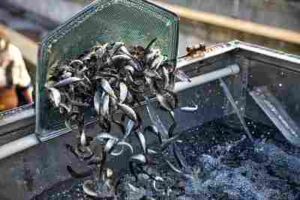
Coastal development and habitat alteration, fostered by human activities, create conditions that may favor the establishment and proliferation of invasive species, disrupting the balance of local ecosystems.
Accidental releases of invasive species can occur during activities like ship maintenance, marine construction, or when organisms are transported for research purposes, further contributing to the spread of non-native species in the ocean.
Controlling the proliferation of invasive species in the ocean requires proactive measures such as strict biosecurity regulations for shipping, responsible aquaculture practices, and public awareness to prevent intentional and unintentional introductions. Monitoring and management strategies are crucial to mitigate the ecological impact of invasive species on marine ecosystems.
6). Disease Spread in Marine Communities: An Example of Human Impacts On the Ocean Ecosystem
Diseases can infiltrate and spread within marine communities as a result of intrusive and unsustainable human activities.
Mechanisms by which diseases can spread in ocean ecosystems as a result of human activities include; agricultural practices, ballast water transport, overfishing and stress, pollution and runoff, climate change, introduction of non-native species, habitat destruction, and waste disposal.
Intensive aquaculture operations can lead to crowded conditions, facilitating the rapid spread of diseases among farmed marine species. Pathogens from aquaculture facilities may also infect wild populations.
The discharge of ballast water from ships can introduce pathogens and disease-causing microorganisms into new environments, contributing to the spread of diseases among marine communities globally.
Overfishing and habitat degradation can also stress marine populations, thereby making them more vulnerable to diseases. Reduced resilience in stressed populations can lead to increased disease prevalence and transmission.
Pollution from industrial discharges, agricultural outlets, and nearby urban areas can introduce contaminants and nutrients into marine ecosystems. Altered water quality may compromise the immune systems of marine organisms, making them more susceptible to diseases.
Rising sea temperatures and altered ocean dynamics due to climate change can foster conditions and environments favorable for the proliferation of pathogens. This can lead to an increase in the frequency and severity of diseases affecting marine communities.
The introduction of non-native species is another medium that can bring new diseases into marine ecosystems, as these species may carry pathogens that are novel to the local community. This can lead to outbreaks and impact native marine populations.
Human activities that destroy or alter marine habitats, such as coral reefs and kelp forests, can disrupt the natural stability and composition of ecosystems. This disruption may lead to increased stress and vulnerability to diseases among marine species.
Improper disposal of waste, including untreated sewage and medical waste, can introduce pathogens into marine environments, creating conditions for the spread of diseases among marine communities.
Mitigating the spread of diseases in marine communities requires sustainable aquaculture practices, effective ballast water management, pollution control, habitat conservation, as well as global efforts to address climate change. Monitoring and early detection of diseases are also essential measures for the conservation and protection of marine ecosystems.
7). Ocean Warming
Ocean warming as a result of human activities can be analyzed within a variety of contexts, which include; greenhouse emissions, deforestation, industrial activities, land-use changes, waste heat discharge, over-abstraction, urbanization, and climate change.
The combustion of fossil fuels releases greenhouse gases, primarily carbon dioxide, into the atmosphere. The ocean absorbs a significant portion of this heat-trapping gas, leading to an increase in sea temperatures.
Reduction of nearby forested areas decreases the environment's capacity to absorb or sequester carbon dioxide. This contributes to the accumulation of greenhouse gases in the atmosphere, enhancing the greenhouse effect and warming the oceans.
Industrial processes release heat-absorbing substances and contribute to water and air pollution. This can elevate sea temperatures, particularly in coastal areas near industrial centers.
Alterations in land use, such as expansive urbanization and agricultural expansion, can lead to increased runoff of warm water into the oceans, contributing to localized warming.
The discharge of waste heat from power plants and industrial facilities into coastal waters can directly raise local sea temperatures (a phenomenon called thermal pollution), impacting marine ecosystems.
Changes in aquatic food webs due to overfishing can affect the balance of marine ecosystems, leading to cascading effects that may influence ocean temperatures and currents.
Coastal urban development can modify the landscape, reducing natural cooling processes and increasing heat absorption, contributing to localized warming in coastal waters.
Human-induced climate change, driven by activities like the burning of fossil fuels and deforestation, results in overall warming of the Earth's atmosphere. This, in turn, raises sea temperatures and contributes to ocean warming.
The mitigation of ocean warming requires largescale efforts to reduce greenhouse gas emissions, promote sustainable practices in industries and land use, and address the root causes of climate change. As is the case with other mitigation efforts, international collaboration is important to preserving the health and balance of marine ecosystems.
How Much of the Ocean is Affected By Human Activity?
Approximately 35-40% of the world's oceans are heavily affected by human activities, according to estimates from multiple analyses.
Moreover, no area remains unaffected by human influence, indicating that the entire ocean is subject to some degree of impact from human activities. This emphasizes the widespread and pervasive nature of human impact on marine ecosystems on a global scale.
-Conservation of Marine Life
Meaning of Marine Life Conservation
Marine life conservation refers to the deliberate and coordinated efforts aimed at preserving, protecting, and restoring the diverse range of species and ecosystems that naturally occur within the world's oceans.
It entails strategies and initiatives designed to mitigate the threats and negative impacts posed by human activities, thereby safeguarding the health, biodiversity, and long-term continuity of the marine biome.
Marine life conservation must be addressed with cognizance of the various threats and human impacts on oceans, including; overfishing, habitat destruction, pollution, climate change, and invasive species.
Excessive and often unsustainable fishing practices deplete fish stocks, disrupt marine food webs, and threaten the long-term viability of numerous species.
Human activities and their effects, such as bottom trawling, coastal modification, and water/sediment pollution, contribute to the degradation and loss of crucial marine and brackish habitats like coral reefs, estuaries, mangroves, and seagrasses.
Industrial discharges, agricultural effluents, and plastic waste contaminate marine environments, affecting water quality, harming marine organisms, and contributing to widespread ecological damage.
Anthropogenic climate change, facilitated by activities like the use of coal energy and combustion of other fossil fuels, results in rising sea temperatures, ocean acidification, and changes in ocean currents, all of which adversely impact marine life.
Introduction of non-native species disrupts local ecosystems, competing intensely and unfavorably with native species and altering the equilibrium of marine communities.
The most important aspects of marine life conservation are; habitat protection, sustainable fisheries management, pollution prevention, climate change mitigation, public awareness and education. Below is a guideline describing the roles involved for each aspect;
Establishing and managing marine protected areas helps to conserve critical habitats, providing safe spaces for marine life to thrive and recover.
Implementing responsible and science-based fishing practices helps prevent overexploitation, and ensures the long-term health of fish stocks while maintaining balanced marine ecosystems.
Efforts to regulate and inhibit the causes of pollution, including plastic waste, oil spills, and industrial outlets, contribute to preserving water quality and safeguarding marine species.
Advocating for and implementing diverse measures to reduce greenhouse gas emissions (such as carbon taxes and CCUS technologies) addresses the root causes of climate change, lessening its impact on ocean conditions.
Raising awareness about the importance of marine conservation fosters a sense of responsibility and encourages individuals to make informed choices that contribute to the protection of marine life.
Marine life conservation is an urgent and multifaceted endeavor that requires global cooperation, scientific research, and sustainable practices. It is important for maintaining the ecological balance of the oceans and ensuring the well-being of both marine ecosystems and the communities that depend on them.
Strategies for Conservation of Marine Life
Strategies for conservation of marine life include; delineation and protection of vulnerable areas, control of invasive species, enforcement of deep sea mining regulations, effective regulation of offshore oil and gas operations, implementation of sustainable fishing practices and policies, pre-treatment of all non-solid wastes before discharge, non-disposal of solid wastes in oceans, regular monitoring and assessment of marine life, sustainable agricultural practices in coastal regions, and adoption of clean energy alternatives.
1). Delineation and Protection of Most Vulnerable Marine Zones
Delineation and protection of the most vulnerable parts of marine ecosystems is a viable strategy for conserving marine life. It is linked to phenomena and practices like; identification of critical habitats, biodiversity hotspot preservation, mitigation of human impact, restoration initiatives, sustainable fisheries management, building climate resilience, research and monitoring, public awareness-raising and engagement.
Delineating vulnerable marine zones helps identify critical habitats such as coral reefs, seagrass beds, and other breeding grounds in the benthic zone. Understanding their significance allows for targeted conservation efforts.
Focusing on delineated zones fosters the preservation of biodiversity hotspots, where a concentration of diverse marine species thrives. Protection in these areas safeguards unique and often fragile marine communities.
Clearly defined vulnerable zones facilitate the implementation of regulations and management strategies to mitigate unsustainable human activities, such as excessive fishing, tourism, and industrial operations, thereby reducing negative impacts on marine life.
Protection measures within delineated zones also allow for targeted restoration efforts, aiding the recovery of damaged and fragmented habitats as well as populations of marine species that may be threatened or endangered.
Delineating zones for marine protection aids in the implementation of sustainable fisheries management. It ensures that fishing activities are regulated, preventing overexploitation and allowing fish stocks to replenish.
Protecting vulnerable marine zones ultimately contributes to the resilience of ecosystems in the face of constraints like climate change. Preserving key habitats helps marine life adapt to changing conditions, maintaining ecological equilibrium as a result.
Delineated zones provide focused areas for scientific research and monitoring. This enhances our understanding of marine ecosystems, helping to adapt conservation strategies based on evolving knowledge.
Clearly defined marine zones create tangible opportunities for public awareness and engagement. Communicating the importance of these areas fosters support for conservation efforts, encouraging responsible behavior and sustainable practices.
The delineation and protection of vulnerable marine zones has a pivotal role to play in marine life conservation as a whole, ensuring the preservation of critical habitats, biodiversity, and the overall health of the oceans. It represents a strategic approach to balance human activities with the need to safeguard the diverse and delicate ecosystems that marine life depends on.
2). Control of Invasive Species for Conservation of Marine Life
Since invasive species are a major threat to ocean ecosystems, one of the ways to conserve marine life is to control the influx and spread of invasive species.
Aspects, outcomes and implications of invasive species' control for marine ecosystems include; preservation of native biodiversity, ecosystem stabilization, habitat protection, prevention of economic losses, mitigation of disease spread, conservation of endangered species, maintenance of ecosystem functionality, and enhancement of climate change resilience.
Below is a list of actionable steps in line with the factors mentioned above;
Controlling invasive species prevents them from pressuring native marine organisms, thereby preserving the natural composition, resourcefulness and diversity of marine ecosystems.
Managing invasive species also helps to maintain the stability of marine ecosystems by preventing disruptions to food webs, nutrient recycling, and other critical ecological processes.
Control measures safeguard essential marine habitats from invasive species, preserving the integrity of areas such as coral reefs, kelp forests, and brackish coastal ecosystems.
Invasive species can harm commercial fisheries and aquaculture. Control efforts can protect these economic activities, reducing the economic impact of invasive species on local communities.
Some invasive species can introduce new diseases to marine populations. Controlling these invaders helps to prevent the spread of such diseases that could devastate native marine life.
As a result of their various effects, invasive species often pose a threat to endangered marine species. Effective control measures contribute to the conservation of vulnerable populations by reducing competition and predation from invaders.
By controlling invasive species, marine ecosystems can maintain their functionality, and continue to support vital processes like nutrient cycling, water purification, and habitat provision.
Managing invasive species contributes to the overall resilience of marine ecosystems, enabling them to better withstand the impacts of regional degradation, global warming and other environmental stressors.
Control of invasive species is an indispensable component of marine life conservation, ensuring the functionality and sustainability of marine ecosystems by preventing the detrimental effects of non-native species on native biodiversity and ecosystem dynamics.
3). Enforcement of Deep Sea Mining Regulations for Conservation of Marine Life
An actionable step to conserve marine life in oceans is the enforcement of regulations for deep sea mining operations. This can provide benefits like; habitat protection, biodiversity conservation, prevention of over-exploitation, reduction of environmental impacts, preservation of genetic resources, mitigation of chemical pollution, ecosystem restoration, and collaboration.
Strict enforcement preserves deep-sea habitats from destructive mining practices, safeguarding unique ecosystems and preventing habitat degradation.
Regulations also ensure that deep-sea mining activities do not lead to the loss of biodiversity, protecting diverse and often poorly understood species residing in deep-sea environments.
Enforcement prevents over-exploitation of mineral resources, ensuring that deep-sea mining operations are conducted sustainably without depleting crucial elements of the Earth's crust and marine environment.
Regulations dictate the use of technologies and practices that minimize the environmental impact of deep-sea mining, preventing severe long-term damage to marine ecosystems.
Enforcement contributes to the preservation of genetic resources in deep-sea environments, ensuring the protection of unique and potentially valuable genetic material from marine organisms.
Regulations can include measures to minimize the release of harmful chemicals associated with deep-sea mining, thereby preventing pollution that could adversely affect marine life.
Enforcement may stipulate restoration and rehabilitation obligations for mining companies, ensuring that disturbed areas are rehabilitated to support the recovery of marine life.
Lastly, consistent enforcement fosters international collaboration in deep-sea conservation efforts, recognizing the interconnectedness of ocean ecosystems and the need for a unified approach to their protection.
Enforcing regulations on deep-sea mining is essential for balancing human activities with the conservation of marine life. It ensures that exploitation of deep-sea resources is conducted responsibly, minimizing negative impacts on the sensitive and distinctive ecosystems found at various depths of the ocean.
4). Effective Regulation of Offshore Oil and Gas Activities for Conservation of Marine Life
Like deep-sea mining, oil and gas operations in offshore environments can be regulated to conserve marine life.
When offshore oil and gas operations are effectively regulated, it can result in; habitat preservation, prevention of oil spills, minimization of pollution, noise and vibration management, sustainable fisheries management, emergency response planning, monitoring and reporting, as well as liability and financial assurance.
Stringent regulations ensure the protection of marine habitats by limiting the impact of offshore oil and gas activities on critical areas, such as mangroves, coral reefs, mangroves, and macroalgal beds.
Robust regulations mandate preventive measures and response protocols, reducing the risk of oil spills that can have catastrophic effects on marine ecosystems, wildlife, and coastal communities.
Regulations control the discharge of pollutants, including hydrocarbon byproducts and drilling fluids, mitigating the impact of contamination on water composition and marine life.
Effective regulations address the impact of noise and vibration from offshore activities, minimizing disruptions to marine species, including those sensitive to sound such as whales and dolphins.
Regulations guide sustainable fishing practices around offshore platforms, preventing overfishing and preserving the balance of marine ecosystems that support fisheries.
Well-defined regulations usually require comprehensive emergency response plans, ensuring swift and effective actions in the event of accidents or unforeseen events. This minimizes damage to marine environments.
Regulations mandate regular monitoring and reporting of environmental impacts, enabling authorities to assess the effectiveness of mitigation measures and adapt regulations based on evolving knowledge.
Effective regulations establish clear liability frameworks and financial assurances, holding companies accountable for environmental damages and ensuring the availability of funds for cleanup and restoration efforts.
The above outline shows that effective regulation of offshore oil and gas activities is crucial for balancing energy needs with the conservation of marine life. It promotes responsible practices, minimizes environmental risks, and safeguards the resources and internal processes of marine ecosystems.
5). Implementation of Sustainable Fishing Practices and Policies for Conservation of Marine Life
By implementing sustainable fishing practices and policies, we can conserve marine life through; prevention of overfishing, protection of critical habitats, bycatch reduction, ecosystem-based management, seasonal closures and quotas, enforcement of size limits, community-based fisheries management, monitoring and surveillance. Below are details of these potential outcomes;
Sustainable fishing practices, guided by well-implemented policies, prevent the depletion of fish stocks, maintaining the balance of marine ecosystems and ensuring the long-term viability of fisheries.
Policies can designate and protect critical habitats, such as spawning grounds and nurseries, ensuring that they remain undisturbed and supporting the reproductive success of marine species.
Implementing policies to minimize bycatch through the use of selective fishing gear and techniques helps protect non-target species, reducing the unintended impact on marine life.
Sustainable fishing policies generally take into account the broader ecosystem, considering the interactions between species and their environments to ensure the wellbeing and optimal functioning of the entire marine ecosystem.
Effective policies may include seasonal closures and catch quotas to manage fishing pressure, allowing fish populations to recover during breeding seasons and prevent overexploitation.
Policies enforcing size limits contribute to the protection of juvenile fish, enabling them to reach maturity and reproduce before being harvested, and supporting the continuity of fisheries.
Involving local communities in decision-making processes and implementing policies that support community-based fisheries management are steps which can enhance the sustainability of fishing practices.
Robust policies include measures for monitoring and surveillance to ensure compliance with sustainable fishing practices, providing data for adaptive management strategies.
Implementation of sustainable fishing practices and policies is essential for the conservation of marine life, promoting responsible resource management and ensuring the continued health and productivity of oceans.
6). Pre-treatment of All Non-Solid Wastes Before Discharge
Pre-treatment of non-solid wastes, especially before their discharge, is an important applicable measure for marine life conservation.
Benefits of treating solid waste before discharge include; pollution prevention, reduced harm to marine organisms, prevention of eutrophication, mitigation of disease spread, protection of coral reefs and other coastal habitats, preservation of water quality, compliance with environmental regulations, and long-term ecosystem health. Below is a more elaborate discussion of these benefits;
Pre-treatment minimizes the discharge of harmful chemicals and pollutants, preventing the introduction of toxic substances into marine environments and safeguarding water quality.
Treating non-solid wastes before discharge reduces the impact of these materials on marine organisms, helping to preserve the productivity and well-being of marine life.
The pre-treatment process can remove excess nutrients from wastewater, preventing eutrophication in coastal areas and minimizing the negative effects of excessive nutrient influx on marine ecosystems.
Effective pre-treatment measures can eliminate or reduce pathogens in wastewater, thereby mitigating the risk of disease transmission among marine populations.
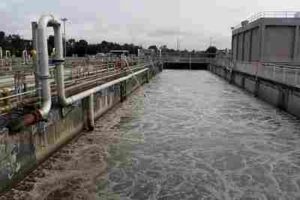
By preventing the discharge of harmful substances, pre-treatment contributes to the protection of exposed, sensitive marine habitats, including seaweed beds and intertidal reef zones.
The removal of contaminants through pre-treatment helps maintain high water quality standards, providing a healthier environment for marine organisms to thrive.
Pre-treatment ensures compliance with environmental regulations, promoting responsible waste management practices and preventing the violation of discharge standards that could harm marine ecosystems.
Lastly, implementing pre-treatment measures supports the long-term vitality and resilience of marine ecosystems, thereby minimizing the cumulative impact of human activities on ocean environments.
Pre-treatment of non-solid wastes before discharge is a proactive and preventative approach that can be instrumental in the conservation of marine life, by contributing to the instantaneous health and long-term sustainability of habitats in the ocean.
7). Non-disposal of Solid Wastes in Oceans for Conservation of Marine Life
Non-disposal of solid wastes in oceans is another actionable measure for conserving marine life and protecting habitats in oceans.
It is useful for many purposes, which include; prevention of habitat degradation, minimization of pollution, protection of marine species, preservation of biodiversity, mitigation of plastic pollution, promotion of sustainable practices, prevention of coastal contamination, and compliance with environmental standards.
Avoiding the disposal of solid wastes in oceans preserves critical marine habitats, preventing physical damage to the seafloor and coastal areas that are vital for marine life.
Non-disposal reduces the introduction of pollutants and toxins into marine environments, maintaining water quality and minimizing the negative impact on marine organisms.
Preventing solid waste disposal safeguards marine species from ingestion, entanglement, and other harmful interactions, promoting their well-being and reducing the risk of injury or mortality.
By avoiding the introduction of solid wastes, the conservation of marine biodiversity is promoted, maintaining the natural balance of ecosystems and supporting the coexistence of diverse species.
Non-disposal helps curb the pervasive issue of plastic pollution, preventing the harmful effects of plastic debris on marine life, including ingestion and entanglement.
Encouraging non-disposal fosters sustainable waste management practices, promoting responsible behavior and reducing the overall ecological footprint on marine ecosystems.
Disposing of solid wastes on land rather than in oceans prevents coastal contamination, preserving the integrity of nearshore environments and supporting the health of marine ecosystems.
Adhering to non-disposal practices aligns with environmental regulations, ensuring that waste management activities meet established standards and contribute to marine conservation efforts.
Non-disposal of solid wastes in oceans is a fundamental aspect of marine life conservation, protecting habitats, minimizing pollution, and fostering a sustainable coexistence between human activities and the delicate equilibrium of marine ecosystems.
8). Regular Monitoring and Assessment of Marine Life
A helpful approach to the conservation of marine life will most likely involve regular monitoring an assessment.
By monitoring marine ecosystems and organisms regularly, we can achieve benefits like; early detection of issues, identification of threats, data-informed conservation strategies, population trend and health analyses, ecosystem resilience building, effective conservation, adaptive management, increased public education and awareness.
Regular monitoring enables the early detection of changes or issues in marine ecosystems, allowing for timely intervention and conservation measures.
Ongoing assessment helps identify emerging threats, such as pollution or habitat degradation, allowing for targeted conservation efforts to mitigate the impact on marine life.
Monitoring provides essential data that informs evidence-based conservation strategies, ensuring that efforts are focused on addressing specific challenges faced by marine organisms.
Assessing the population trends and health of marine species allows for a better understanding of their status, aiding in the development of conservation plans to protect vulnerable or endangered groups.
Monitoring helps gauge the resilience of marine ecosystems to environmental stimuli, guiding conservation actions to enhance the ability of ecosystems to withstand such disturbances.
Regular assessment allows for the evaluation of the effectiveness of implemented conservation measures, enabling adjustments and improvements to enhance their (positive) impact on marine life.
Monitoring provides the necessary information for adaptive management, allowing conservation strategies to be adjusted based on the evolving needs and conditions of marine ecosystems.
Sharing monitoring findings with the public can enhance awareness and understanding of marine conservation issues, fostering a sense of responsibility and encouraging support for conservation projects/initiatives.
Regular monitoring and assessment can be vital role in marine life conservation, through provision of essential information for informed decision-making, proactive conservation strategies, and the ongoing preservation of the health and diversity of marine ecosystems.
9) Sustainable Agricultural Practices in Coastal Regions for Conservation of Marine Life
Sustainable agricultural practices can help conserve marine life in oceans.
Some benefits of sustainable agriculture for marine ecosystems are; reduced runoff pollution, preservation of coastal habitats, prevention of nutrient pollution, biodiversity conservation, mitigation of sedimentation, responsible water conservation/management, community engagement and education, as well as adaptation to climate change.
Sustainable practices mitigate runoff pollution by minimizing the use of agrochemicals, preventing soil erosion, and preserving water quality in coastal areas, ultimately reducing the negative impact on marine ecosystems.
Also, sustainable agriculture avoids encroachment into coastal habitats, preventing habitat destruction and preserving crucial areas such as mangroves and seagrasses vital for marine life.
Sustainable practices manage nutrient use, minimizing the runoff of excess nutrients that can contribute to harmful algal blooms and dead zones, thereby protecting marine organisms from nutrient-related stress.
By avoiding habitat destruction and minimizing pollution, sustainable agriculture supports the conservation of biodiversity in coastal regions, and maintains the intricate balance of marine ecosystems.
Sustainable agricultural approaches generally reduce soil erosion, preventing excessive sedimentation in nearby coastal waters. This safeguards marine habitats, supporting the vitality and continuity of marine life.
Responsible use of water resources is an important aspect of sustainable agriculture, reducing the extraction of freshwater from coastal areas. This helps to maintain the balance of freshwater and saltwater interfaces critical for estuarine ecosystems.
Promoting sustainable agriculture involves engaging local communities and educating farmers about eco-friendly practices. This fosters a sense of responsibility and collective action in marine conservation.
Lastly, sustainable practices enhance the resilience of coastal agriculture to climate change, minimizing the impact of extreme weather events and sea-level rise on both agricultural activities and adjacent marine ecosystems.
Collectively, sustainable agricultural practices in coastal regions can be pivotal role in marine life conservation by addressing pollution, preserving habitats, and promoting responsible resource management, ensuring the health and sustainability of interconnected terrestrial and marine environments.
10). Adoption of Clean Energy Alternatives for Conservation of Marine Life
Adoption of clean and/or renewable energy is an applicable measure for conservation of marine life. Clean energy adoption benefits marine life by reducing air and water pollution, mitigating the effects of climate change, preserving coastal habitats, minimizing oil spills, preventing thermal pollution, protecting marine species, promoting sustainable fisheries, and fostering collaborative conservation.
Clean energy alternatives, such as wind energy and solar power, reduce air and water pollution associated with conventional energy resources, minimizing the negative impact on marine ecosystems.
Also, clean energy helps mitigate climate change by reducing greenhouse gas emissions, preventing sea-level rise, ocean acidification, and extreme weather events that harm marine life.
Clean energy infrastructure, unlike traditional methods like coal or oil extraction, minimizes habitat destruction in coastal areas, preserving critical habitats for marine organisms.
Transitioning to clean energy reduces the reliance on offshore oil and gas extraction, decreasing the risk of oil spills and the associated devastating repercussions for marine ecosystems.
Clean energy technologies generate less thermal pollution than traditional power plants, helping maintain suitable temperature conditions for marine life and reducing stress on aquatic organisms.
Adoption of clean energy contributes to the protection of marine species by preventing habitat degradation, pollution, and other environmental disturbances associated with the extraction and transport of fossil fuels.
Clean energy supports sustainable fisheries by addressing climate change impacts, preserving marine habitats, and contributing to the overall health and resilience of marine ecosystems.
The global shift towards clean energy fosters international collaboration in addressing environmental issues, promoting a unified approach to marine life conservation on a broader scale.
From the above, it can be deduced that the adoption of clean energy alternatives represents a crucial step toward marine life conservation, offering a sustainable and eco-friendly path that mitigates human impact on oceans and ensures the long-term health of marine ecosystems.
Conclusion
Threats to the ocean ecosystem are;
Overfishing
Noise Pollution
Oil Spillage
Dumping of Plastics and Other Solid Wastes
Industrial Waste Discharges
Unsustainable Deep Sea Mining
Human impacts on the ocean include;
Habitat Loss in the Deep Ocean
Severe Marine Pollution
Ocean Acidification
Biodiversity Loss
Proliferation of Invasive Species
Disease Spread in Marine Communities
Ocean Warming
Conservation of marine life can be achieved through;
Delineation and Protection of Most Vulnerable Marine Zones
Control of Invasive Species
Enforcement of Deep Sea Mining Regulations
Effective Regulation of Offshore Oil and Gas Activities
Implementation of Sustainable Fishing Practices and Policies
Pre-treatment of All Non-Solid Wastes Before Discharge
Non-disposal of Solid Wastes in Oceans
Regular Monitoring and Assessment of Marine Life
Sustainable Agricultural Practices in Coastal Regions
Adoption of Clean Energy Alternatives

